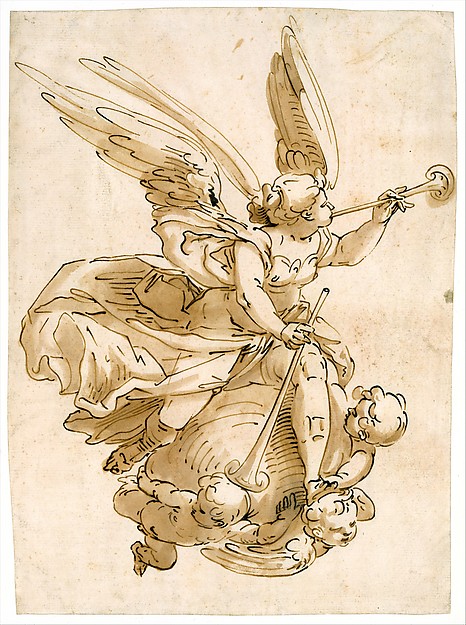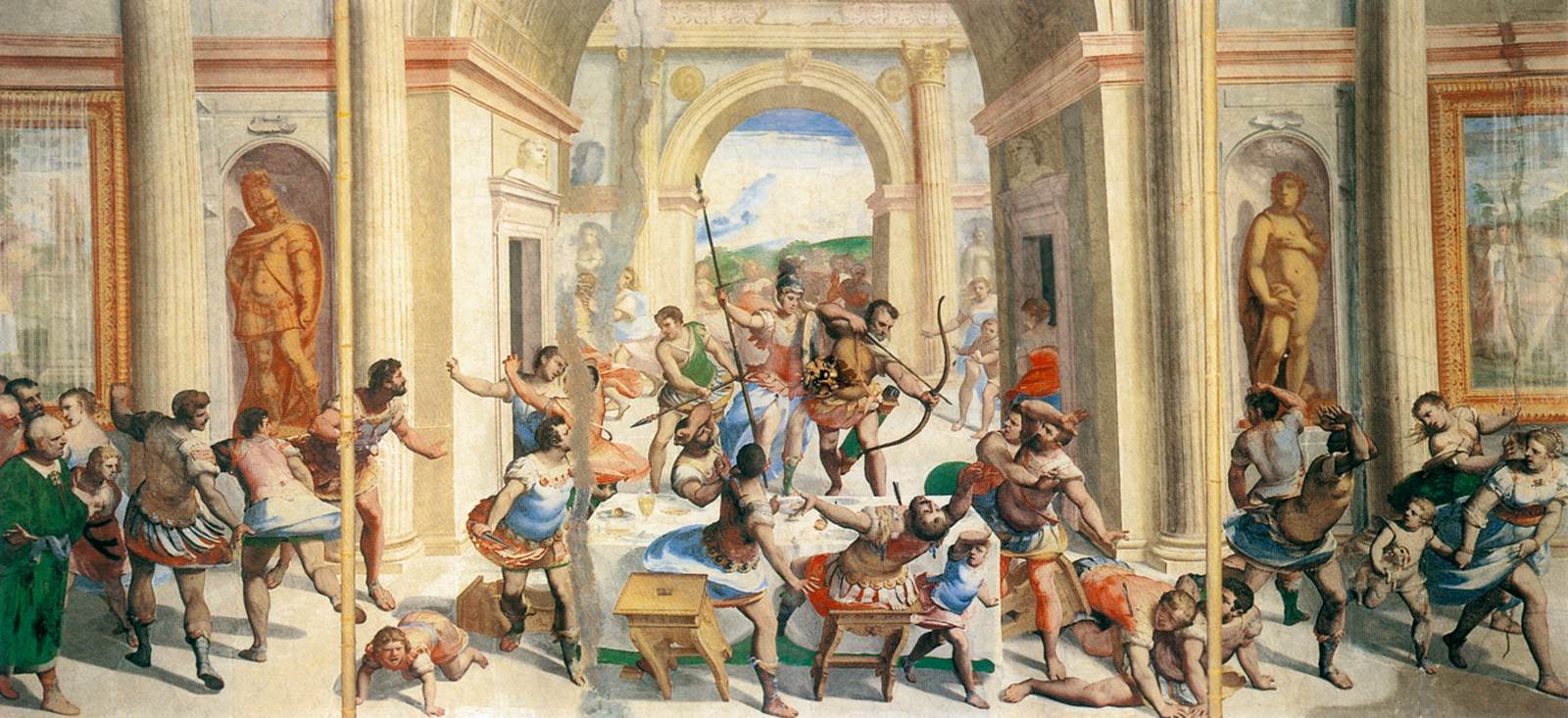By: Amy Fredrickson
Luca Cambiaso was born in Genoa on 18 November 1527. He was a leading artist in Genoa during the middle and late sixteenth century and ran a large and productive workshop. His decorative wall paintings in churches and palazzi fostered the tradition of Genovese wall painting.
He began painting at a young age with his father, Giovanni Cambiaso (1495–1579). Luca produced his first works when he only was fifteen years old. By age seventeen, he was working on the decoration for the Palazzo Doria with his father. Luca also assisted Il Bergamasco (1500 – 1579)—a history painter—on decorations for the church of San Matteo. During the 1550s Luca partnered with Giovanni Battista Castello on several projects. Luca Giustiniani commissioned both artists to decorate the loggia of the piano nobile for his villa. In the same villa, Luca also painted Diana and Apollo. In 1560, Cambiaso executed frescoes in the Palazzo Imperiale in Campetto, Genoa, which led to his fame and to further commissions, such as the Life of Cleopatra. Unfortunately, this work was destroyed during World War II. He continued to work with Castello throughout the 1560s, and they decorated several Genovese palazzi. Around 1565 he executed the Rape of the Sabines for the salone ceiling in the Villa Cattaneo. Additionally, for the Palazzo Meridiano, he frescoed The Return of Ulysses, and Castello produced the stucco ornaments.
Luca was open to learning new techniques, and he studied Raphael and Michelangelo. Contemporary portrait painter Valerio Corte (1530-1580) influenced his style through his art collection. Corte held the works of Titian, Paolo Veronese, and Andrea del Sarto. Luca’s works such as Saint John the Baptist and Saint Luke in the Genoa Cathedral (1562) demonstrate how Luca absorbed Venetian coloring. Correggio’s impact is evident in his The Virgin and Child with St John the Baptist, Angels, and God the Father (1563). The Uffizi holds his Fighting Figures, which shows Luca’s draughtsman style. The work also shows his incorporation of geometric forms, which he experimented with during the mid-1560s. His use of shapes rendered his work of this period somewhat simplified; however, it shows his interest in experimenting with new styles and ideas. He was also familiar with Albrecht Dürer’s prints and Erhard Schön’s publication, Underweissung Proportion (1538) which was circulating in Genoa. By the 1570s, Luca’s works began to have a more contemplative feeling, which he continued to develop during the remainder of his career. Luca also executed several night scenes, which may have influenced later artists like George La Tour.
In September 1583, Cambiaso was invited to work for Philip II of Spain. Two years earlier he had sent The Martyrdom of Saint Lawrence as a test piece. This work convinced the King’s advisors that Luca’s taste aligned with the Kings and that he was an appropriate choice. His first commission was to decorate the church of San Lorenzo in the Hieronymite monastery of the Escorial. He worked on San Lorenzo with several artists including his son Orazion and his former partner Castello, who had moved to Spain several years before Luca. By May 1584, he completed large canvases of Saint Anne, The Sermon of St John the Baptist, Saint Ursula and the Ten Thousand Virgins, and The Archangel Michael. By 1585 his finished the frescos for Capilla Mayor and San Lorenzo’s sacristy. Unfortunately, since the frescos were executed quickly and with the help of several artists, scholars do not believe they are good examples of Luca’s ability as a painter. Luca died in Madrid on the 8 September 1585. His style influenced many subsequent painters, such as his son Orazion, and several artists who closely studied his frescos in Genoa. His followers became known as the Genoese School.
References:
Magnani, Lauro, “Cambiaso, Luca.“ Grove Art Online. Oxford Art Online. Oxford University Press, accessed November 16, 2017, http://www.oxfordartonline.com/subscriber/article/grove/art/T013288.
Mancini, Federica, Luca Cambiaso, (Milan: 5 continents, 2010)
Virgin with the Christ Child in Swaddling Clothes, 1575-80, Oil on canvas, Museo dell’Accademia Ligustica di Belle Arti, Genoa
Diana and Satyr, c. 1560, Fresco, Loggia di Diana, Villa Pallavicino delle Peschiere, Genoa
Fame, mid- to late 16th century, Pen and brown ink, brown wash, over traces of black chalk, The Metropolitan Museum of Art
Apollo Driving the Chariot of the Rising Sun, 1527–85, Pen and brown ink, brush and brown wash, over black chalk; squared in red chalk, The Metropolitan Museum of Art
Odysseus Slays the Suitors in His Palace, 1565-66, Fresco, Salone, Palazzo Grimaldi della Meridiana, Genoa





